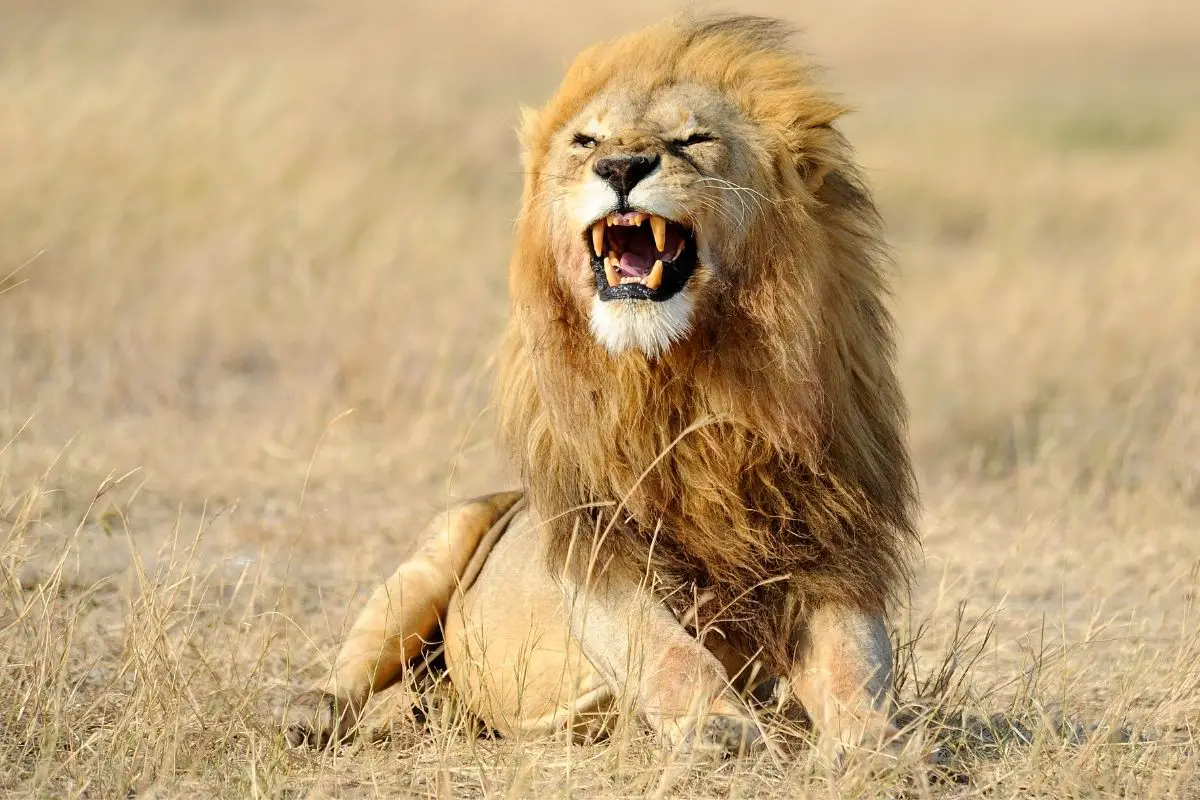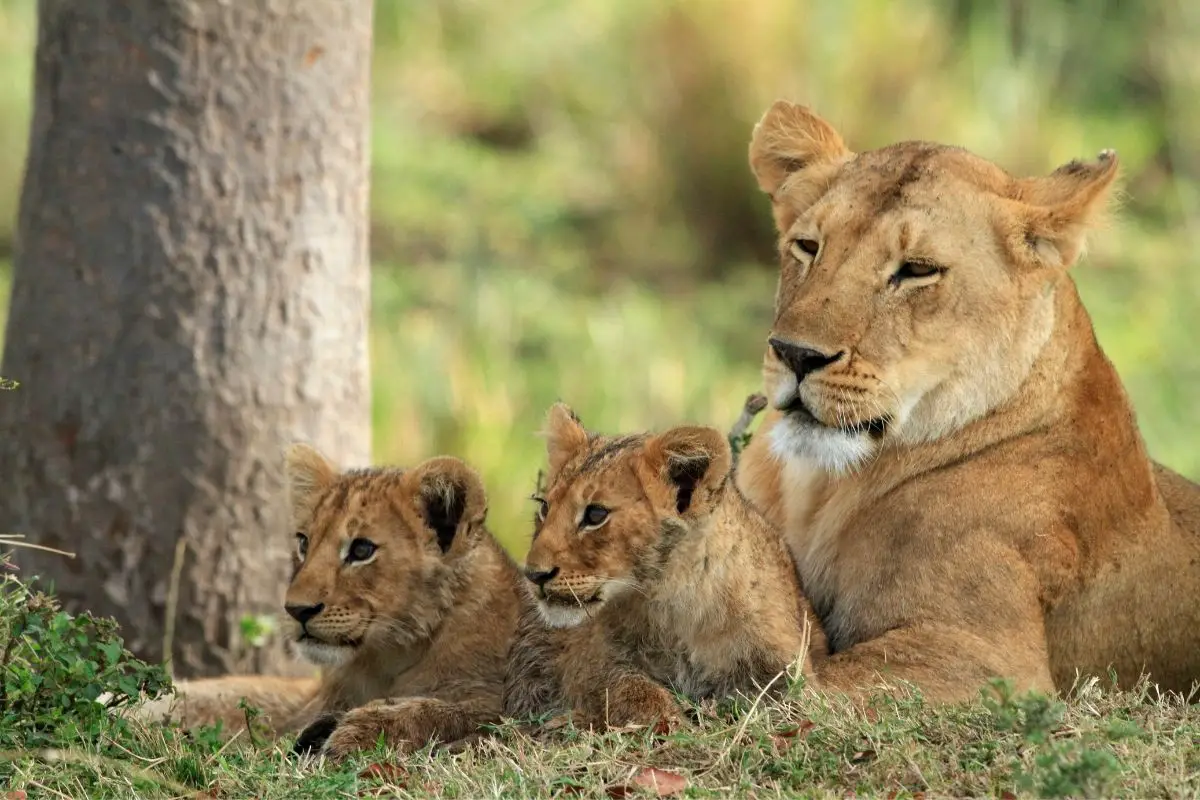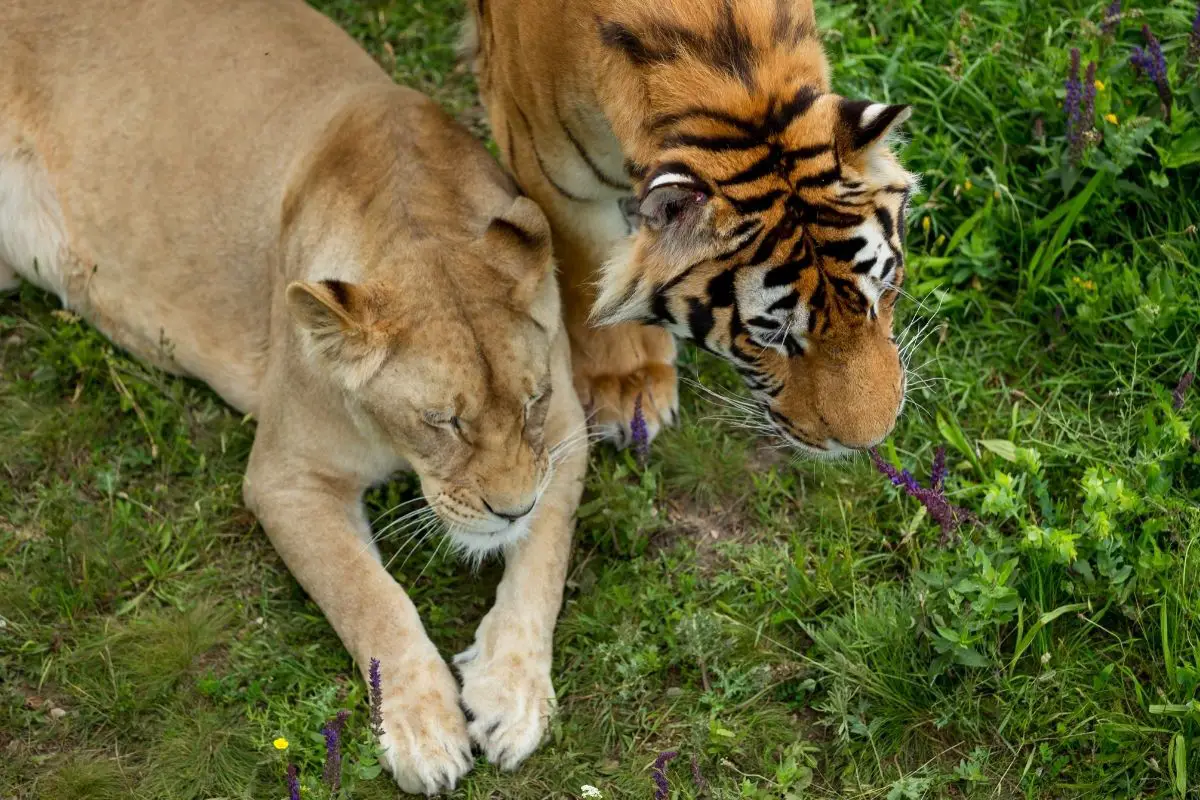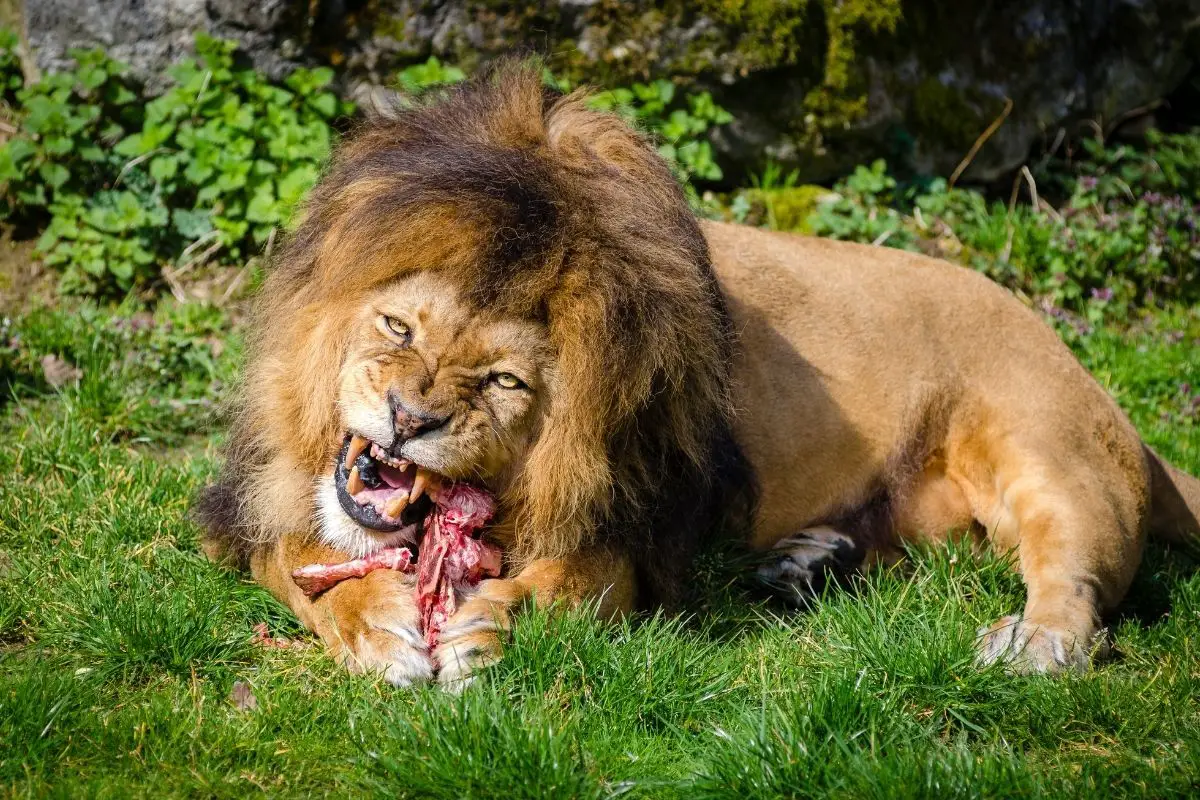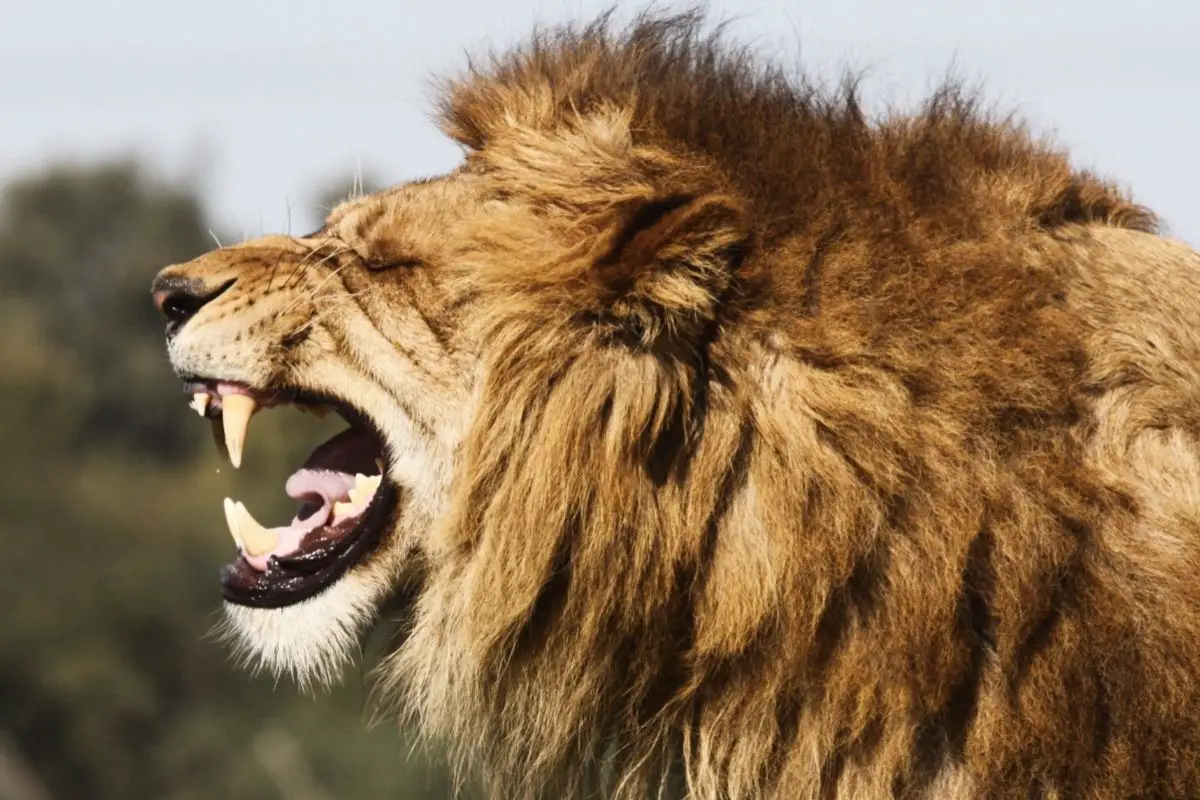Updated: July 2025
Updated: July 2025
Whether you encounter them at your local zoo or witness them on an African safari, lions are among nature’s most impressive predators. These magnificent big cats spend up to 20 hours a day resting, but when they’re active, they’re focused, strategic hunters capable of taking down prey ten times their size.
As apex predators, lions have remarkably diverse diets, but do lions actually eat birds? The answer might surprise you – and it reveals fascinating insights about their survival strategies and adaptability as carnivores.
Let’s explore the fascinating world of lion dietary habits, hunting strategies, and how their feeding behavior differs dramatically between wild and captive environments.
Do Wild Lions Eat Birds?
Yes, wild lions do eat birds, but they’re typically opportunistic snacks rather than primary food sources. In the African savannas and grasslands, lions are adaptable carnivores that will consume virtually any animal protein they can catch – from tiny insects to massive buffalo.
The sub-Saharan wilderness provides abundant large prey like wildebeest, zebras, buffalo, and various antelope species. These animals form the backbone of a lion’s diet because they provide the massive caloric intake these 300-400 pound predators require to survive.
Why birds are usually just snacks:
• Energy vs. reward ratio: Lions expend significant energy hunting (up to 3,000 calories per hunt), so they prefer prey that provides substantial nutrition return
• Feather problem: Birds have extensive plumage that lions cannot digest, making them less nutritionally efficient than mammals
• Size matters: Most birds are too small to satisfy a lion’s daily requirement of 11-15 pounds of meat (females) or 15-20 pounds (males)
However, lions will readily consume larger ground birds like ostriches (which can weigh up to 350 pounds), secretary birds, guinea fowl, bustards, and even vultures when opportunities arise. They also supplement their diet with smaller prey including rodents, reptiles, fish, and even insects during lean times.
Seasonal bird consumption increases during nesting seasons when ground-nesting birds are more vulnerable, and during migration periods when exhausted birds are easier targets. Young lions and cubs are more likely to hunt birds as they practice their hunting skills.
Scavenging behavior is another crucial aspect of lion feeding. They frequently steal kills from other predators like leopards, cheetahs, and hyenas, and will eat any fresh carcass they encounter – including bird carcasses left by other predators.
Lions also venture near human settlements, where they may hunt livestock and domestic poultry – a behavior that unfortunately leads to human-wildlife conflict and threatens lion populations across Africa.
How Do Lions Hunt Birds vs Large Prey?
Understanding lion hunting behavior helps explain why birds aren’t their preferred prey. Lions live in social groups called prides, typically consisting of 2-3 adult males, 5-10 females, and their cubs up to 2 years old.
The hunting hierarchy:
• Lionesses do 85-90% of hunting – they’re faster (up to 50 mph) and more agile than males
• Males primarily protect territory and the pride from threats, plus hunt very large prey like buffalo
• Cubs learn by observing until they’re 12-15 months old and can participate in hunts
Territory and hunting grounds:
Each pride controls a territory spanning 20-150 square miles (larger in arid regions), depending on prey availability and water sources. Like domestic cats, lions are territorial and will defend their hunting grounds fiercely against intruders.
Hunting strategy for large prey:
Lionesses are ambush predators rather than endurance runners. They use sophisticated teamwork:
- Stalking phase: Lions approach prey downwind, using cover and preferring dawn/dusk hunting when prey is most active
- Encirclement: Multiple lionesses position themselves around the target in a coordinated formation
- Coordinated attack: They close in simultaneously from different angles to prevent escape
- Kill method: Large prey is killed by throat bite (asphyxiation), while smaller animals like birds are killed by head bite or powerful paw strikes that can break necks instantly
Bird hunting differs significantly – it’s usually opportunistic and individual rather than coordinated. Lions will pounce on ground birds, raid nests during breeding season, or catch birds drinking at water sources. Single lions are more successful at bird hunting than groups.
Success rates vary dramatically – only about 17-19% of hunts for large prey succeed, but bird capture rates are much higher (60-70%) due to their smaller size and limited escape options once spotted.
Despite being relatively slow long-distance runners, lions possess crushing bite force (650 PSI – stronger than most other big cats) and razor-sharp retractable claws that make them formidable predators capable of dispatching birds instantly.
Feeding hierarchy is strictly enforced: dominant males eat first, followed by lionesses by rank, then cubs. This system ensures the strongest members maintain their ability to hunt and protect the pride.
Do Captive Lions Eat Birds?
Captive lions receive carefully managed diets designed to replicate their natural nutritional needs while ensuring optimal health. Modern accredited zoos and wildlife facilities follow strict dietary protocols developed by veterinary nutritionists and adhere to AZA (Association of Zoos and Aquariums) guidelines.
Primary Protein Sources
Main meat sources in captivity include:
• Beef (muscle meat, organs, and heart – typically 60-70% of diet)
• Horse meat (when available and legal – closest to natural prey nutritionally)
• Chicken (whole carcasses including bones and feathers for enrichment)
• Rabbit (whole prey for natural feeding behavior simulation)
• Fish (occasional variety – usually salmon or mackerel for omega fatty acids)
• Whole birds like quail, pheasants, or chickens (1-2 times per week)
Whole prey feeding is increasingly common as it provides mental stimulation and maintains natural feeding behaviors. This includes whole chickens, rabbits, and specially sourced whole birds like quail, guinea fowl, or pheasants that provide both nutrition and behavioral enrichment.
Bone Consumption
Bone consumption is essential for captive lions because it:
• Provides calcium and phosphorus for strong bones and teeth (proper 1.2:1 ratio)
• Exercises jaw muscles and helps clean teeth naturally, preventing dental disease
• Offers behavioral enrichment through gnawing and chewing (can occupy them for hours)
• Maintains digestive health by providing necessary roughage for proper digestion
Common bones include beef femurs, knuckle bones, and large marrow bones. These must be appropriately sized to prevent choking or dental damage and are typically given 2-3 times per week under supervision.
Specialized Commercial Foods
Specialized carnivore diets supplement fresh meat and provide:
• Balanced vitamins and minerals not found in muscle meat alone (especially vitamins A, D, E)
• Taurine (essential amino acid for all cats – prevents heart disease and vision problems)
• Consistent nutritional content year-round regardless of meat quality variations
• Proper fat content (8-15% of diet) for coat health and sustained energy
These commercial foods are typically pelleted or ground meat-based products designed specifically for large carnivores in captivity, such as Mazuri Carnivore Diet or similar scientifically formulated products.
Do Lions Eat Every Day?
Wild lions don’t eat daily – they follow a feast-or-famine pattern that reflects their natural hunting success rates and energy conservation strategies adapted over millions of years.
Wild feeding patterns:
• Hunting frequency: Every 3-4 days on average (more frequent during dry season when prey concentrates near water)
• Daily requirement: 11-15 pounds of meat per day (females), 15-20 pounds (males)
• Feast capacity: Can consume up to 25% of their body weight in one feeding (up to 88 pounds for large males)
• Fasting ability: Can survive up to 2 weeks without food if necessary, though this causes significant stress
• Seasonal variation: Eat more during migration seasons when prey is abundant, less during droughts
Captive feeding schedules are more regulated but mimic natural patterns:
• Adult lions: Fed 5-6 times per week (8-12 pounds per feeding depending on size and activity)
• Fasting days: 1-2 days per week (mimics natural patterns and prevents obesity)
• Portion control: Measured amounts based on individual body weight, age, and activity level
• Enrichment feeding: Occasional whole prey items and puzzle feeders to stimulate natural behaviors
This feeding schedule helps maintain natural digestive rhythms and prevents the obesity common in continuously-fed captive carnivores, while ensuring optimal health and longevity in zoo environments.
- Sink Your Teeth Into This: Analyzing the Powerful Lion Bite Force - September 8, 2023
- Siberian Tigers: Everything You Need To Know - September 4, 2023
- Do Lions Eat Humans? Understanding Lion Aggression and Risks - September 4, 2023


